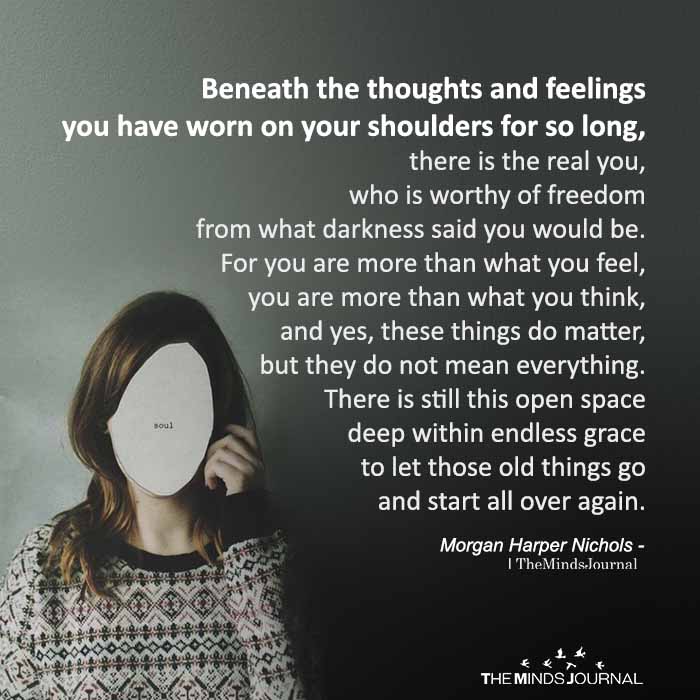Did you ever notice that sometimes, your daily life seems stressed, exhausting, and downright overwhelming? Despite planning a to-do list? Then maybe it’s time to make a to-feel list for yourself to make your daily life more easy and joyful.
A strange and different kind of year is coming to an end, and oddly, most of us are experiencing the same pre-holiday stressors as we do during any other “normal” year. For a year that was seemingly “canceled”, we sure have a lot to get done, right? Here’s a feeling on the list to make the rest of the year, a more easy and joyful one for you.
What this tells us, if anything, is that feeling of overwhelm and “being swamped” are just that, feelings. Feelings may feel like facts, but they’re not. Feelings are created by our thoughts, and our thoughts – as solid as they seem – are simply our personal meaning-making practice.
We confuse our thoughts with facts and then velcro ourselves to those thoughts as though anyone in our shoes would think and consequently, feel the same way. We label ourselves and others, and move on as though the conviction of our thoughts have somehow moved to the arena of “truth”.
It is my experience that there are very few absolute “truths” in our lives. The time of day, where we work, our address, the name of our family members, and a few other facts … the list is not long. “My life sucks”, “————- is a narcissist”, “Women are better leaders”, “Time is running out”, “The holidays are stressful”, … are thoughts, not facts.

Understanding the distinction between our facts and our thoughts matters, because we don’t have control over many circumstances, but we do have control over what we make those circumstances mean and consequently, how we respond to them.
Read 11 Positive Thoughts For Your Everyday Motivation
Mastering the process of objectifying our thoughts, will allow us several excellent options:
- When negative thoughts come into our mind, we can practice the art of “noticing”, and not make them mean anything more than passing clouds in the sky.
- We can question negative thoughts, and there are several masters, like Byron Katie, who teach this work, and slowly but surely, dismantle thoughts that have turned into beliefs that are not serving us.
- We can create new, more helpful thoughts on purpose.
So what does all this have to do with feelings of overwhelm and being swamped, that so many of us are complaining about, especially at this time of year?
Most professionals in the field of human behavior will agree that our thoughts create our feelings. If I’m in conversation with a client, and she states that she is feeling apathetic, angry, or swamped, I’m going to ask questions that will allow us to understand the thoughts leading to her feelings.
This is a classic model that many coaches use, and its elegance and nuances deserve a deeper explanation and exploration than I can devote to in a short blog.
Read 10 Ways You’re Making Your Life Harder Than It Has To Be
However, with this background in mind, I’d like to offer you a different way of approaching the next 6 weeks, leading to the new year. First, work with a pro to manage your calendar like a Ninja Warrior. I do this with my clients, and there are many excellent coaches that specialize in this practice.
‘To Feel’ list to make your daily life easy
After you get rid of your “To Do” list, because it’s now on your calendar, create a “To Feel” list.
If you are already devoted to morning practice, you can add this small element. If you don’t yet have a morning practice, put aside just 5 minutes to sit still and write a list of all the feelings you want to experience on this day.
Don’t be surprised if you can’t think of more than a handful of emotions to even consider. Part of the beauty of this exercise is to open our minds and hearts to all the options that are available to us. How can we cultivate positive feelings, if we can’t even name them? How to create a to feel list?
Here are the 6 steps I propose for this 6-week experiment.
- Put aside 30 minutes to broaden your feelings vocabulary. You can do this by going on the internet, or reach out to me and I’ll send you a document with many feelings you didn’t even know you could have!
- Every morning, take 5 quiet minutes to imagine the day ahead. Ask yourself, “Given all the things that are on my calendar today (remember you’ve already done this work with a pro), how would I like to feel?
- Do a thought download of all the feelings that come to mind. Remember, this is a new practice for most of us, and the mind will likely fight back. Keep your attention on the positive feelings you want to experience, and write them all down.
- Narrow the list down to 3 feelings, and finally, focus on 1 single feeling you’d like to experience on this day.
- Take a few minutes to imagine what that feeling would be like in your body, and move forward with your day.
- A personal habit I’ve cultivated is writing the feeling I want to experience throughout the day on a small note card, and making sure it’s visible to me throughout my day.
I hope that replacing your To-Do list by turning pro with your calendar, and cultivating the practice of creating a To Feel list, will make this holiday season and the rest of the year, a more easy and joyful one for you.
Written By: Carolyn Mahboubi If you are curious to learn more about Life Coaching, then click here Originally Appeared On: Carolynmahboubi.com Republished With Permission.









Leave a Reply